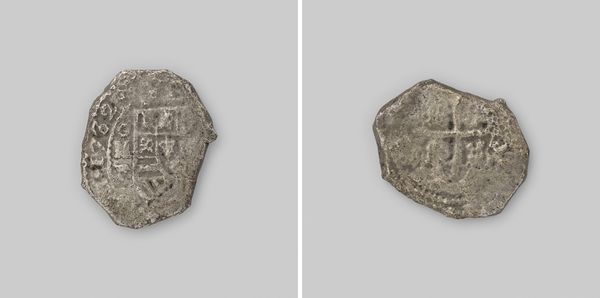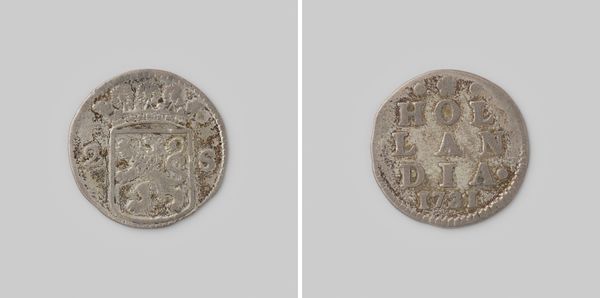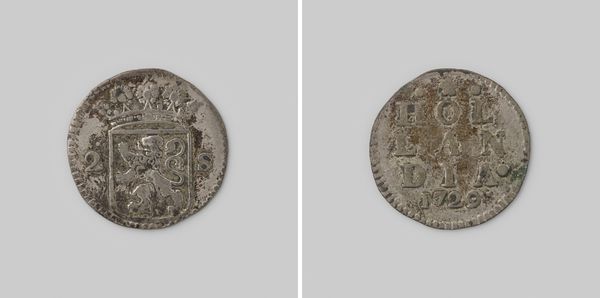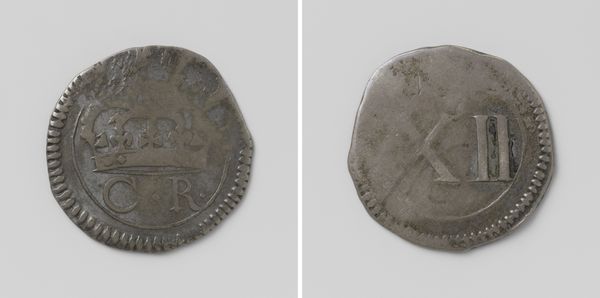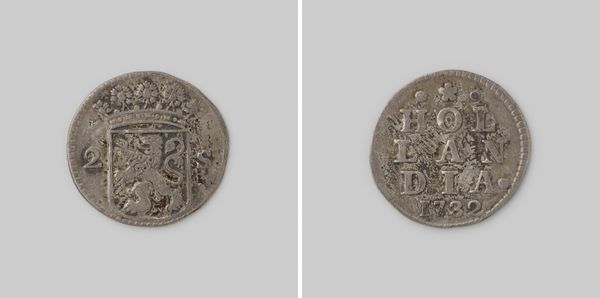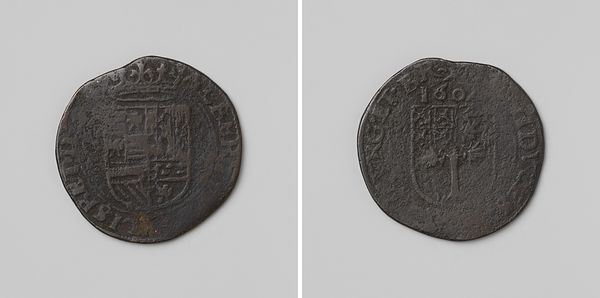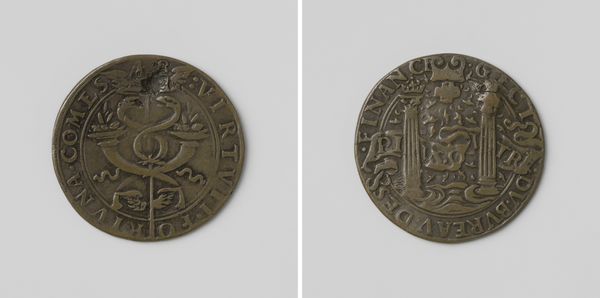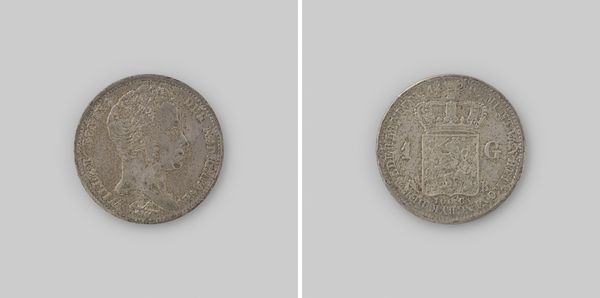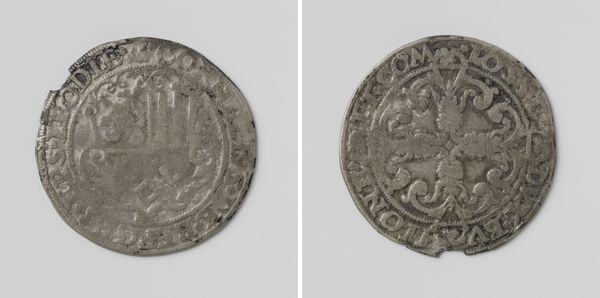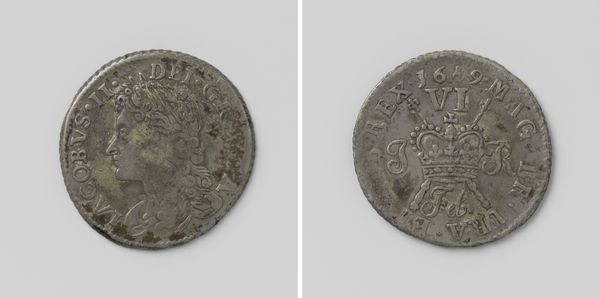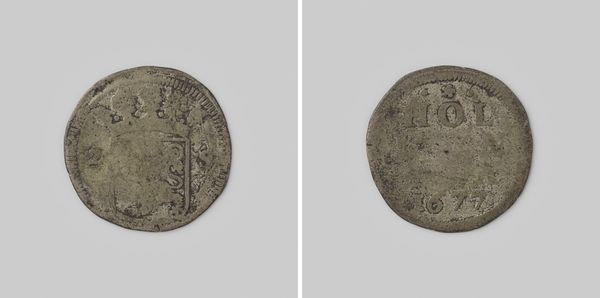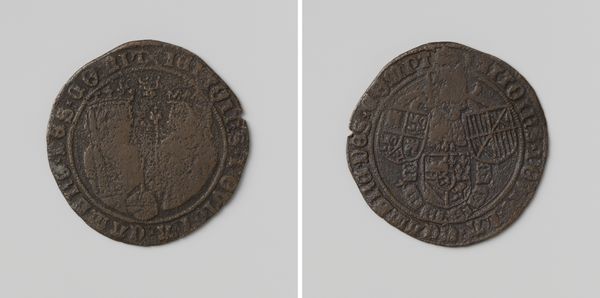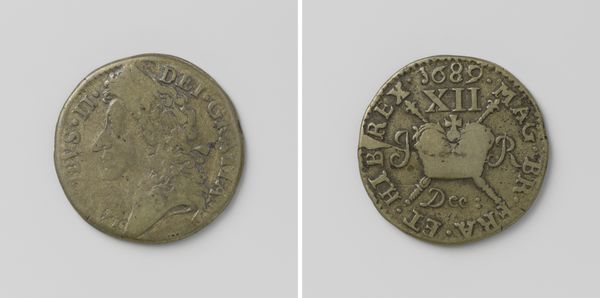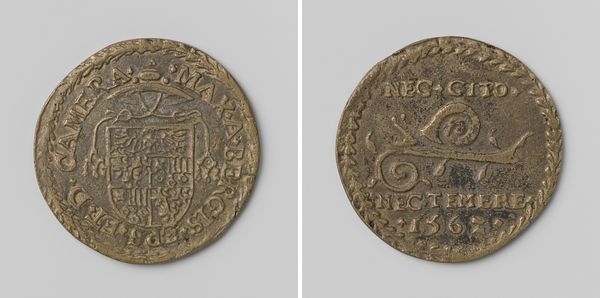
Shilling; twaalf pence, noodmunt uit Pontefract, uit het beleg door Oliver Cromwell 1648
0:00
0:00
print, metal, relief, engraving
#
medieval
# print
#
metal
#
relief
#
engraving
Dimensions: height 2.8 cm, width 2.8 cm, weight 3.62 gr
Copyright: Rijks Museum: Open Domain
Curator: Look at this striking example of resilience – a silver shilling, also known as twaalf pence, a piece of emergency coinage from Pontefract during the 1648 siege by Oliver Cromwell's forces. An anonymous creation. Editor: The first thing that strikes me is how rudimentary and determined it appears; it embodies that defiant "we shall overcome" spirit despite its small stature, don't you think? Curator: Exactly. This piece tells the story of a town under immense pressure. During the English Civil War, Pontefract Castle remained a Royalist stronghold. With Parliamentarians laying siege, the Royalists inside the castle began striking their own coins out of necessity. This shilling, then, is more than currency; it's a declaration of independence and resistance against Cromwell's Roundheads. Editor: And consider what coinage normally signifies: control, stability, centralized power. Minting your own says, "We are our own power structure now". What symbolism. Curator: Precisely. One face shows a depiction of the castle itself, surrounded by the legend "Post Mortem Patris Pro Filio" which translates to "After the death of the father, for the son"— a reference to Charles II's claim to the throne after his father's execution. Editor: So, we see not just immediate necessity but an active bid for the future political structure, an active statement of belief and Royalist allegiance—it wasn't simply to buy goods; it was an investment in restoring the monarchy. Curator: Absolutely. It provides a fascinating insight into the ingenuity of besieged communities. Forced to use what materials they had, the rough engraving on metal illustrates a point in British history that we understand through wider conflict. Editor: This emergency coin embodies more than survival: the Royalists inside the castle, creating the coin, make this the material culture of resistance itself—an embodiment of active opposition at the centre of societal conflict. Curator: And by understanding the socioeconomic factors we can see the currency's value to our current collections for historical perspective. It offers valuable context for a key moment in British socio-political history, while adding depth and character to a period we tend to understand from books alone. Editor: Exactly. Examining objects like this gives nuance to social understanding beyond any one sided narratives and highlights both past and current issues related to resistance and identity, that the audiences of all ages should be considering.
Comments
No comments
Be the first to comment and join the conversation on the ultimate creative platform.
